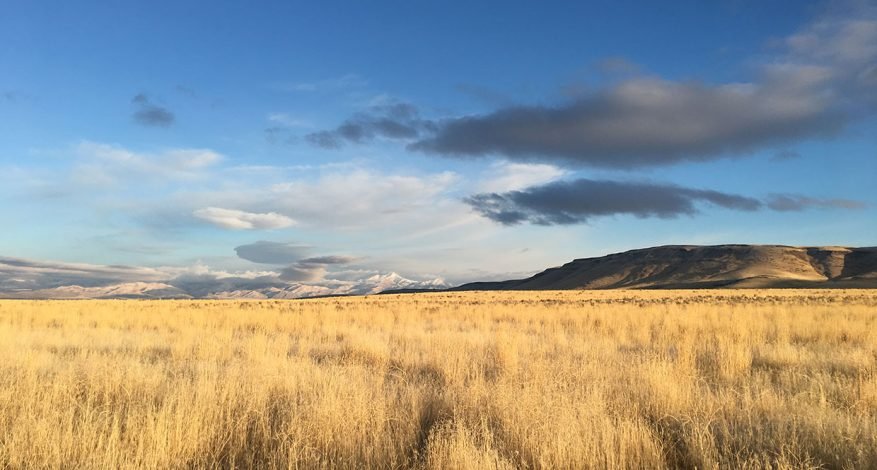se oregon : december ‘21
This pigment comes from Nancy’s pigment collection, which she’s been forming since she began to work with desert minerals as paint in the 1990s. The collection is location-centric, meaning that Nancy’ primary focus in gathering the pigments is to create a mineral portrait of the state she grew up in, rather than to try to form a paint box that boasts ‘every color of the rainbow.’ The pigments, often gathered in road cuts, document Nancy’s experience of the high desert over a lifetime — roads travelled by her father, by her whole family when she was a child, and by her and her husband later on. Since 2016, Nancy has been the artist-in-residence at the Rimrock Draw Rockshelter archeological dig in SE Oregon, lead by archeologist Patrick O’Grady of the UO Museum of Natural & Cultural History.
This SE OREGON pigment is one of a set of four different sunrise-hued iron oxides from two different roads — Highway 140, near Adel, Oregon, and Catlow Valley Road/Highway 205. If your packet label has a little asterisk next to the name, then it’s the pigment from Catlow Valley Road, which is a deep pink ochre. The others — a range of pinks and oranges — are all from Highway 140. Nancy gathered them with friends between 2006 and 2008. Not long afterwards, she realized that she needed only a very small amount of pigment to suit her purposes — a little for her collection glass vials, and a little for her drawings and rubbings. She’s pleased to find a good way to share these pigments, through Ground Bright.
contributor: Nancy Pobanz
Nancy Pobanz is a multi-media artist who has been working with plant and mineral pigments since 1996. She grew up in the town of Ontario, on the edge of Oregon’s high desert, and rediscovered the joys of the desert palette on a visit back to her childhood home. At first she thought she would mix commercial paints to match the iron-rich stones she gathered on her visit, but then it occurred to her that she could reduce the stones themselves and make her own paints. At first she her medium was acrylic, then watercolor, and then she made pastels with the colors. These days, she often simply rubs the dry pigment into paper she draws on. She’s worked with colors from over 300 high desert sites and continues to find more as she explores additional corners of that vast region. www.nancypobanz.com
17.5” x 11.5”
Media: graphite pencil on watercolor paper; pigments collected in SE Oregon: OR hwy 31, east flank of Winter Rim; US hwy 20 milepost 178/179; Rimrock Draw Rockshelter archaeology site, unit 18, Harney County, Oregon; ash from Mt. St. Helens, 1980 eruption. Image courtesy of Nancy Pobaz.
Photo from the People of Red Mountain website.
22% donation recipient : People of Red Mountain
People of Red Mountain, or Atsa Koodakuh wyh Nuwu, is a group of Paiute and Shoshone people from Fort McDermitt Tribe in Nevada, USA who are against the Peehee Mu’huh/Thacker Pass Lithium Mine in Nevada. The group has been camped out at Peehee Mu’huh (which means ‘Rotten Moon’) since last March, and has been joined by many other Indigenous & non-Indigenous groups. In July, the People of Red Mountain and the Reno-Sparks Indian Colony filed a federal lawsuit against Lithium America, the Canadian-owned mining company that plans to mine Peehee Mu’huh. They were joined by the Burns Paiute Tribe. The lawsuit alleges that the BLM illegally ignored potential impacts on water resources and threatened wildlife like the greater sage grouse when it approved the mine. The mine is also on the site of a 1865 massacre of dozens of Paiute people by the Nevada Calvary, that had just one survivor, named Ox Sam. Many of the members of Atsa Koodakuh wyh Nuwu are his descendants. To donate directly to this campaign, please go to: www.peopleofredmountain.com.




